🌟🎨 World Tourist Spot Series: Uruguay Edition 🎨🌟
🎨✨ Discover the charm of Uruguay’s stunning coastline and historic landmarks through vibrant colors! 🌊🏛️ Let your creativity flow as you bring these incredible locations to life, making you feel like you're on a South American adventure! 🌈✨
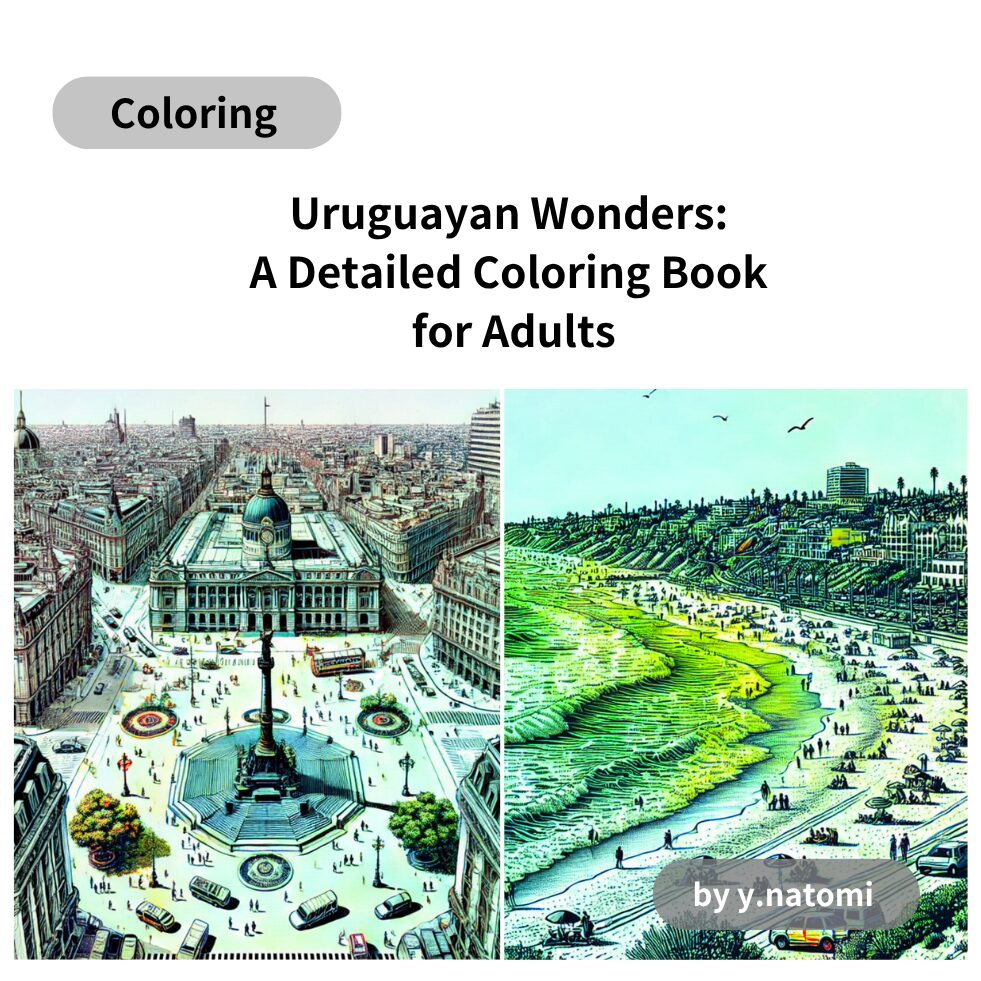
The coloring book is a 49-page, double-page spread book (each page measures 21cm x 21cm). It features 24 themes of tourist attractions depicted in the original coloring illustrations.
On the left pages, original black-and-white illustrations are depicted, while the right pages feature illustrations arranged for coloring.
View the Amazon Book Page Here
Coloring Theme Table of Contents
| 1. Montevideo Skyline | 11. Colonia del Sacramento | 21. Punta Ballena |
| 2. Pocitos Beach | 12. Palacio Legislativo (Legislative Palace) | 22. Laguna Garzón |
| 3. Plaza Independencia | 13. Historic Quarter of Colonia | 23. Fray Bentos Industrial Cultural Landscape |
| 4. Teatro Solís | 14. Portón de Campo (City Gate) | 24. Salto Grande Dam |
| 5. Ciudad Vieja (Old Town) | 15. Colonia Lighthouse | |
| 6. Palacio Salvo | 16. Carmelo Vineyards | |
| 7. Mercado del Puerto | 17. La Paloma Beach | |
| 8. Punta del Este | 18. Santa Teresa National Park | |
| 9. Casapueblo | 19. Cabo Polonio | |
| 10. Playa Brava | 20. José Ignacio Lighthouse |
Click here to view the "Uruguay Travel Guide" and "Highlights of Tourist Attractions."
If you want to see other coloring themes, go to ⇒ Theme Search Map.
Completed Coloring Sample
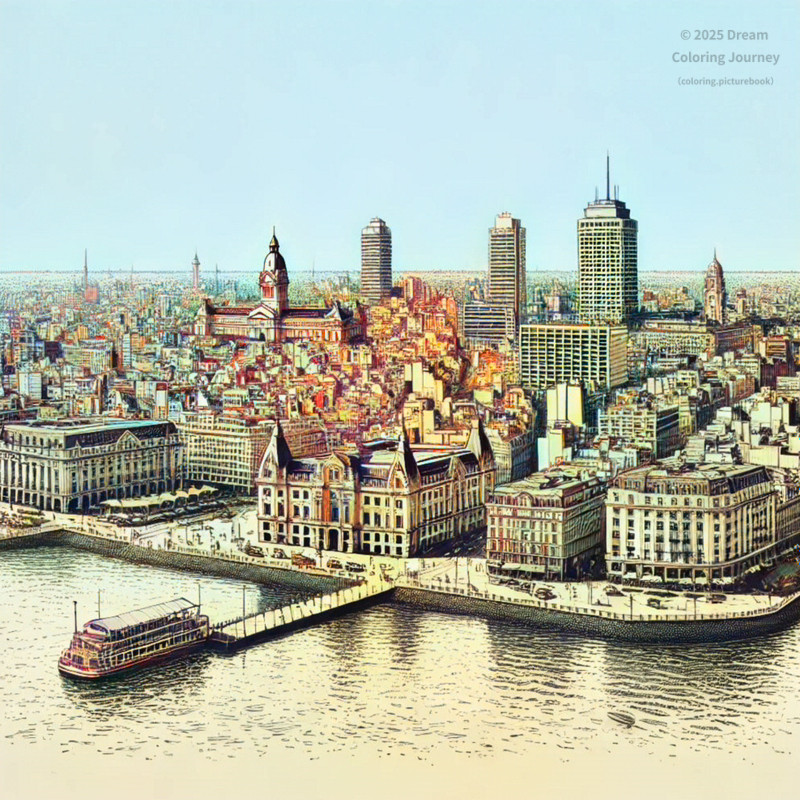
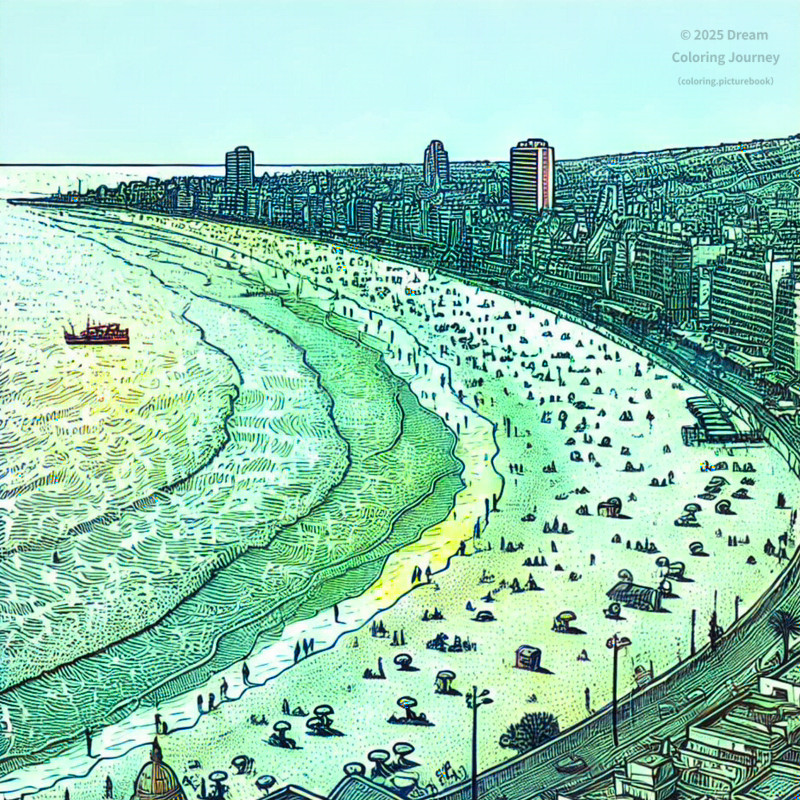
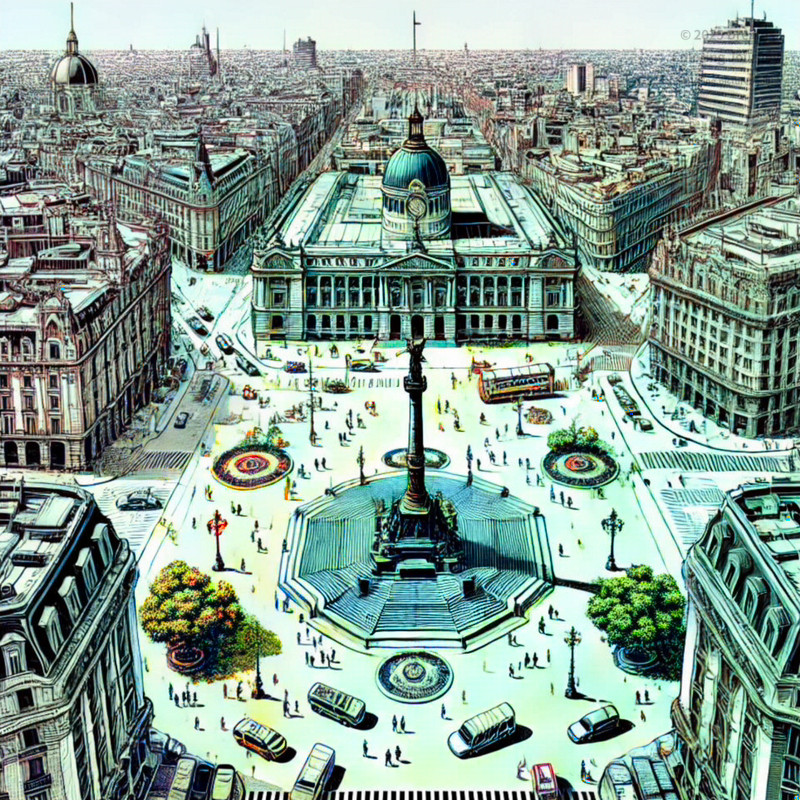
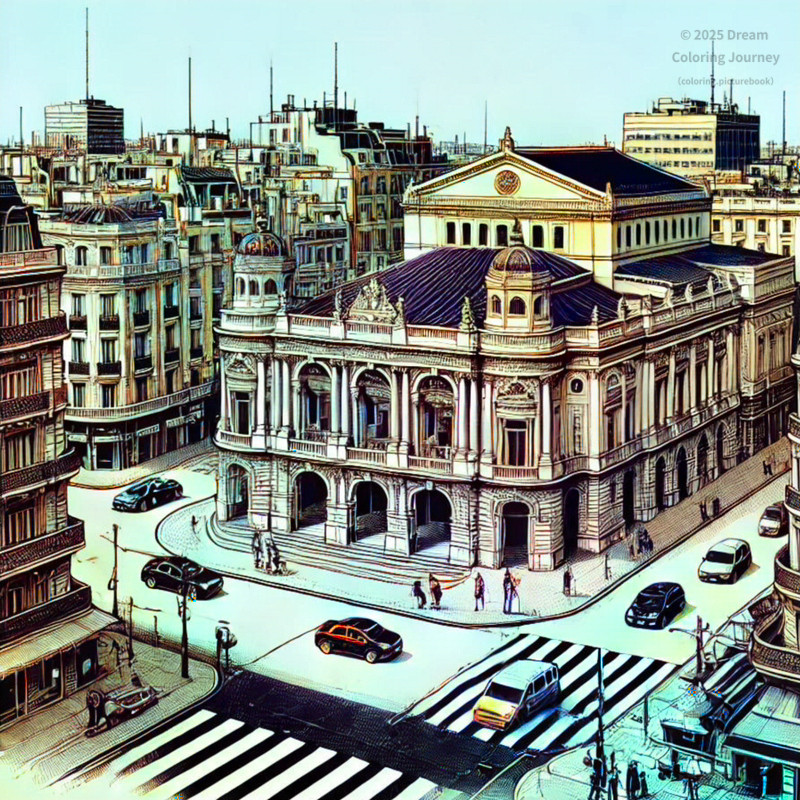
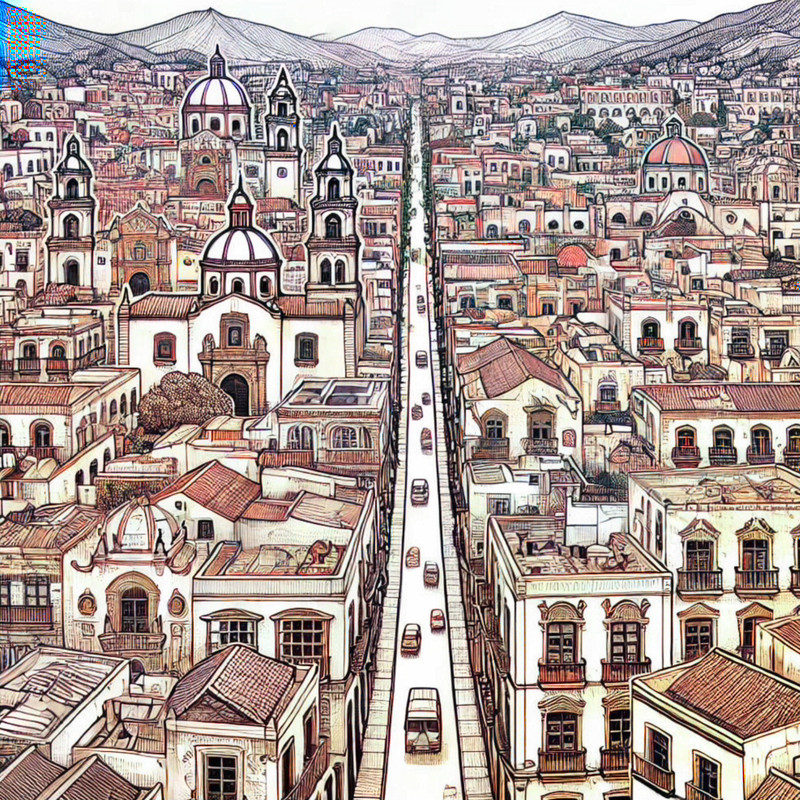
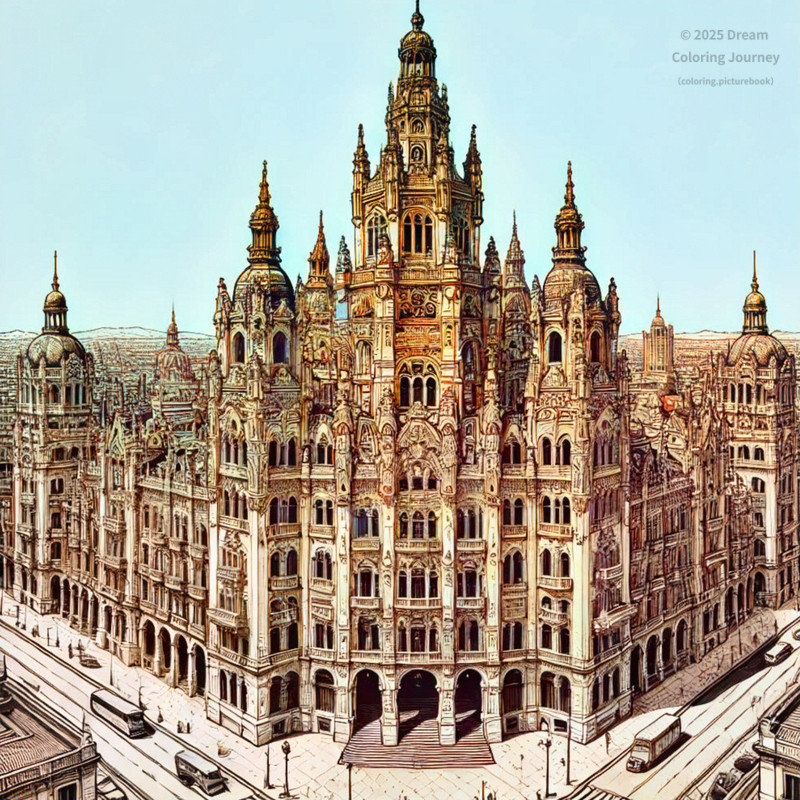
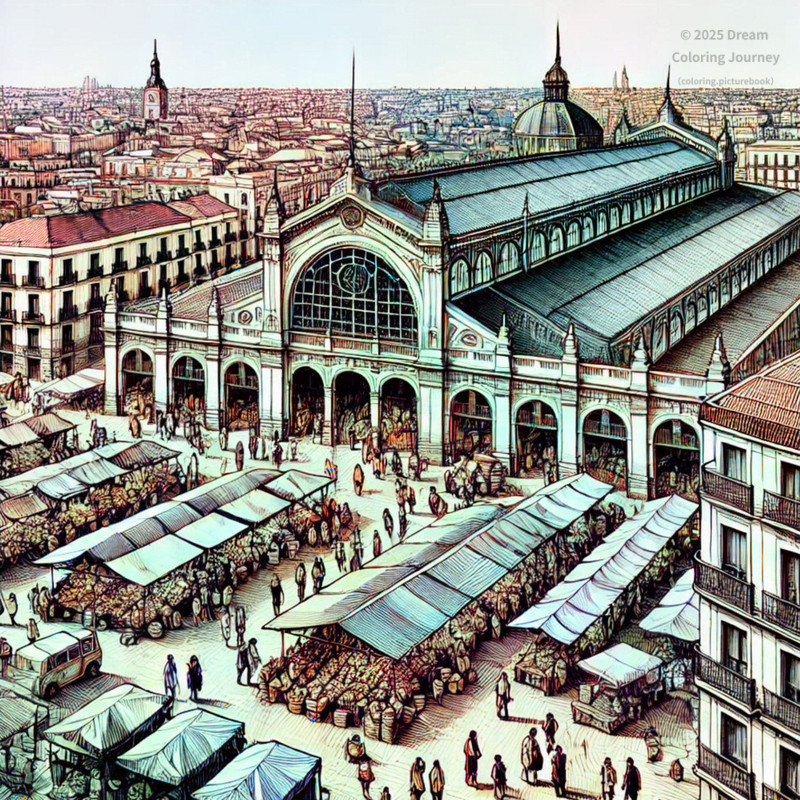
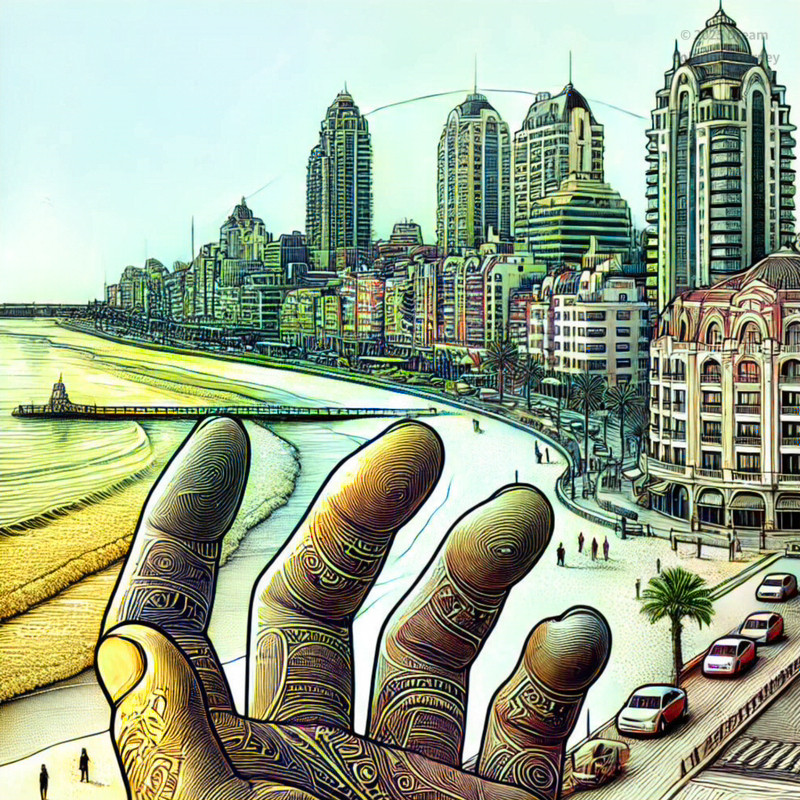
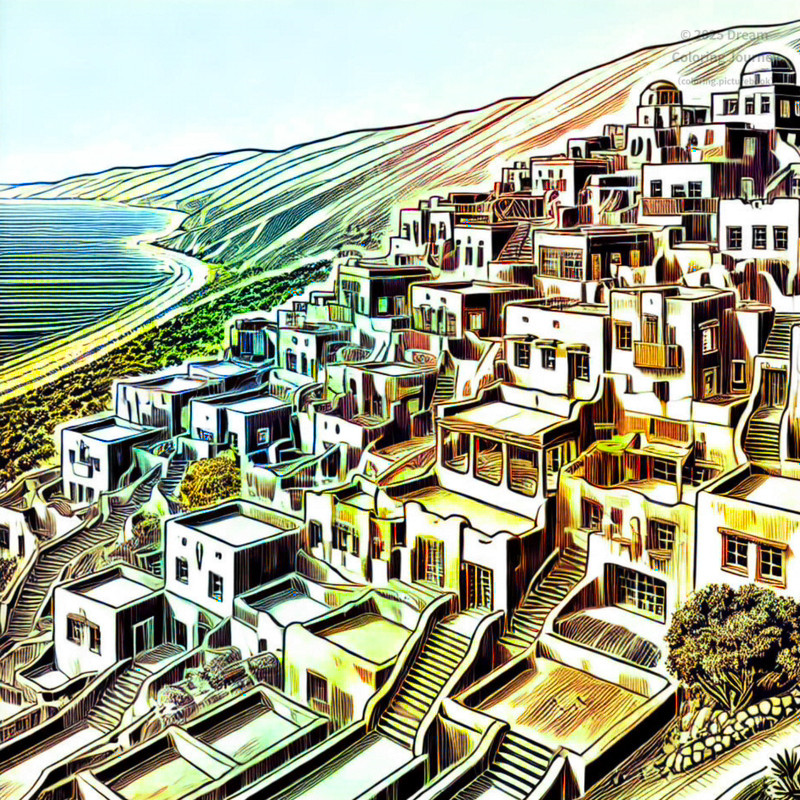
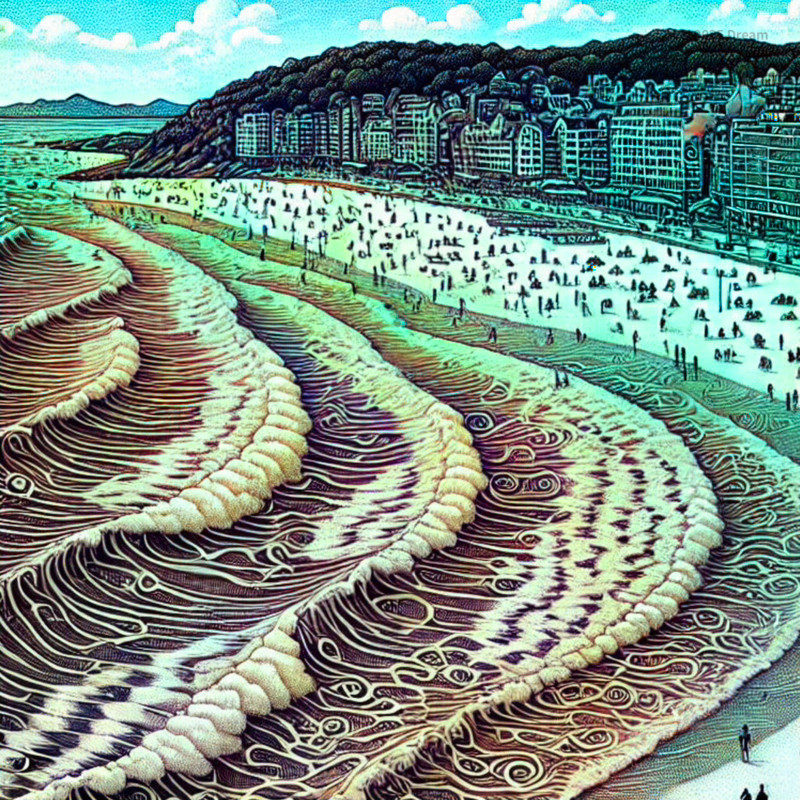
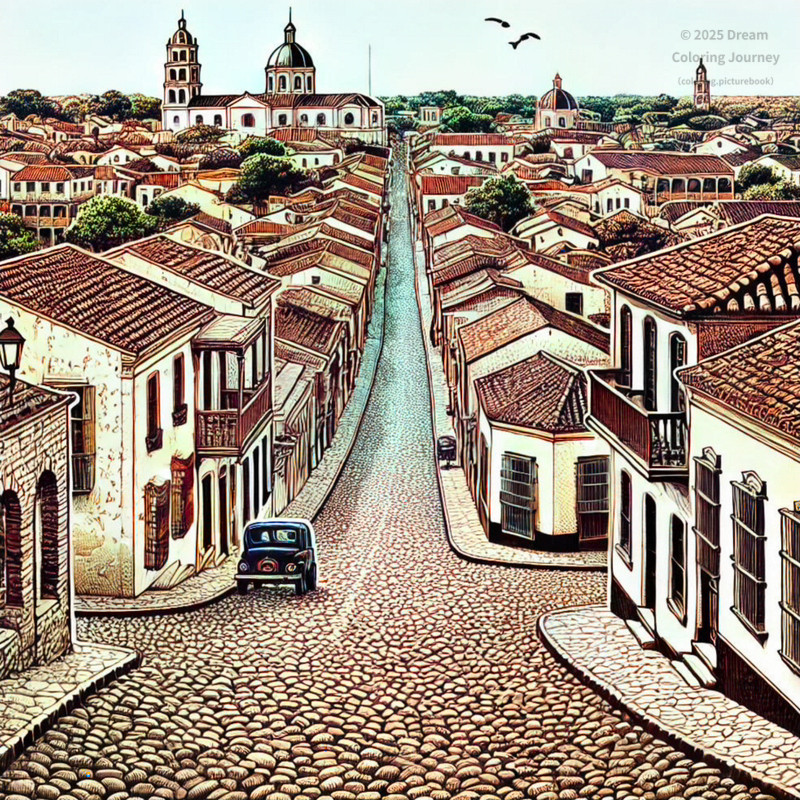
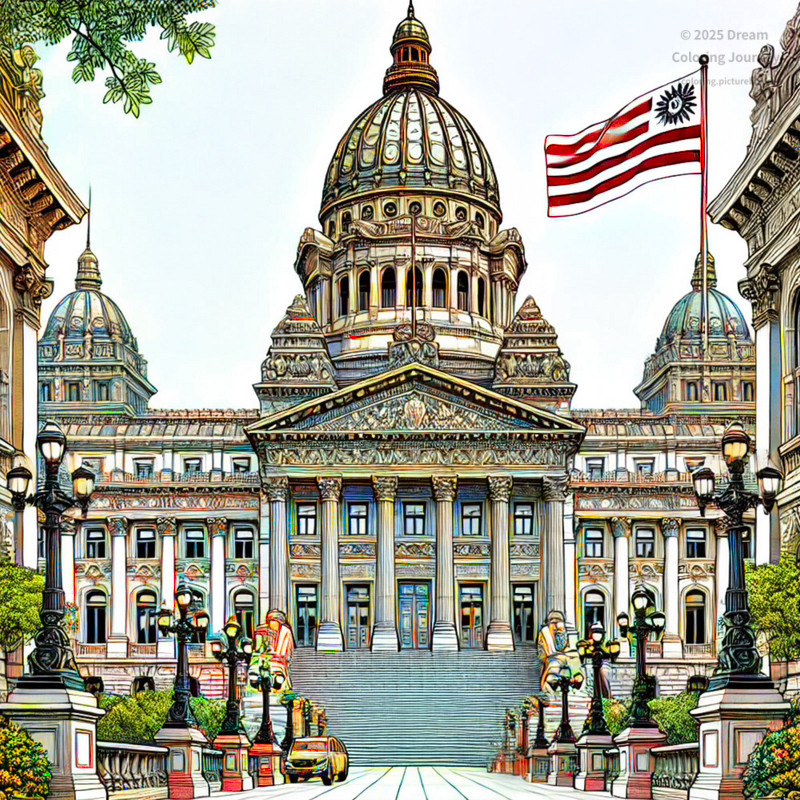
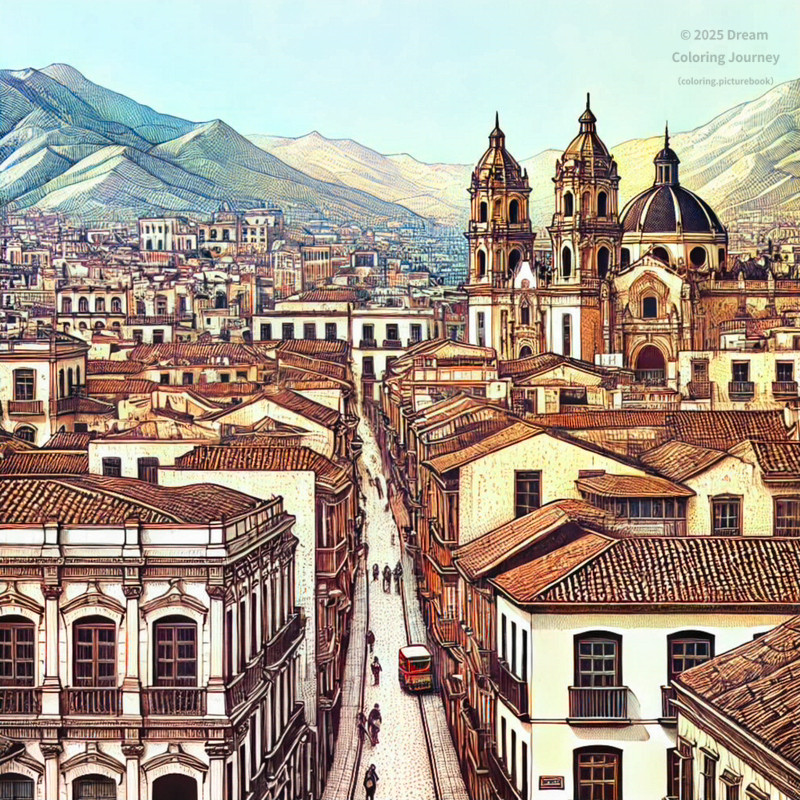
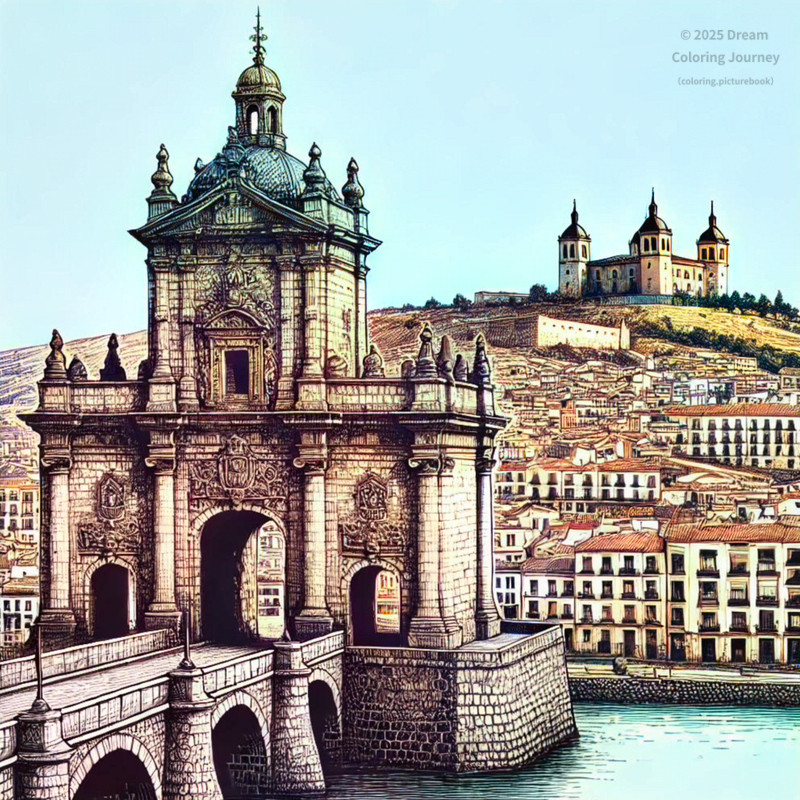
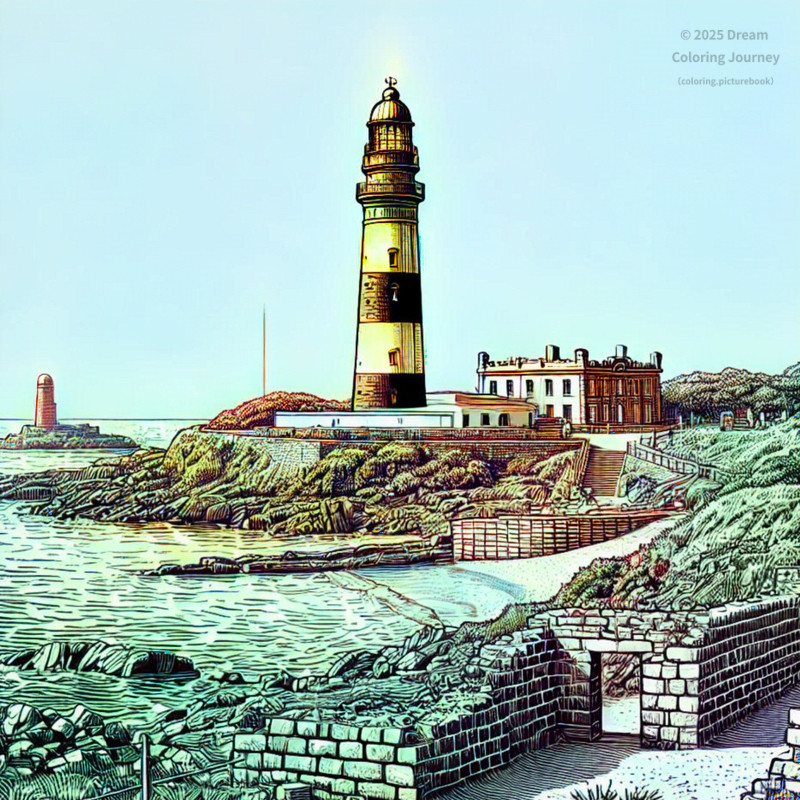
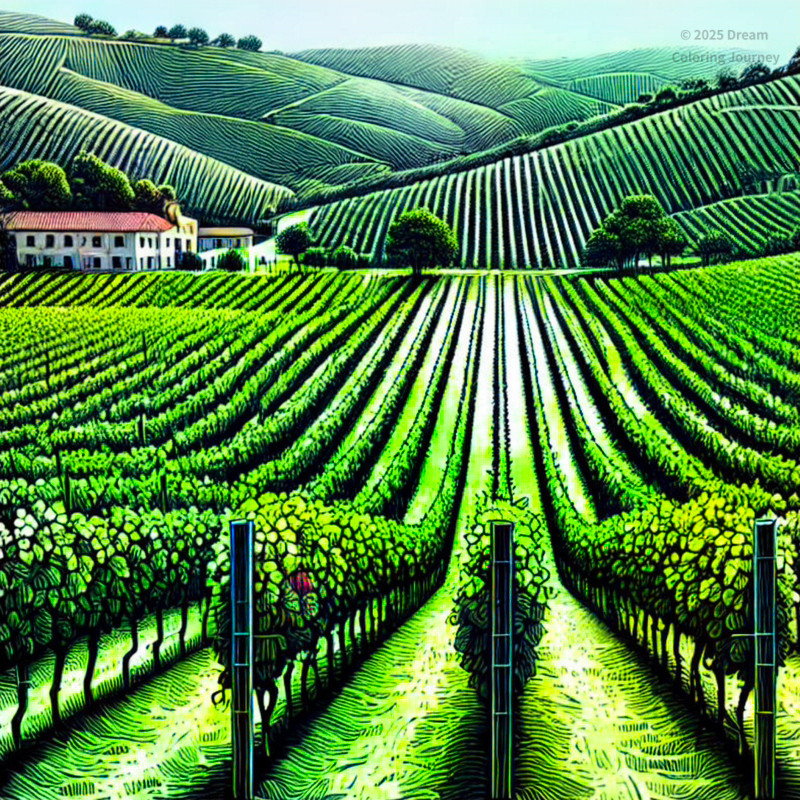
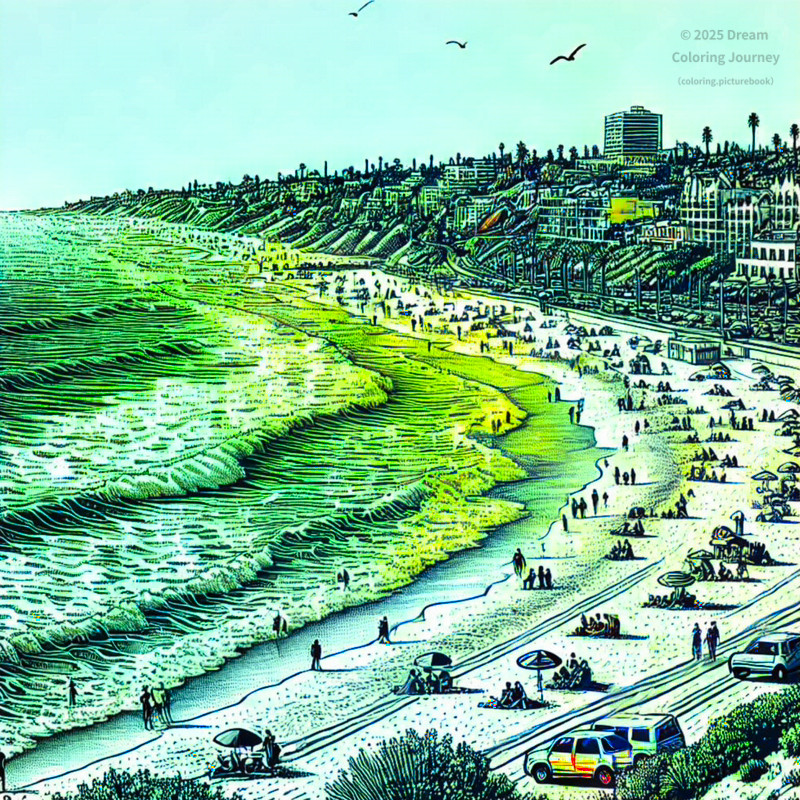
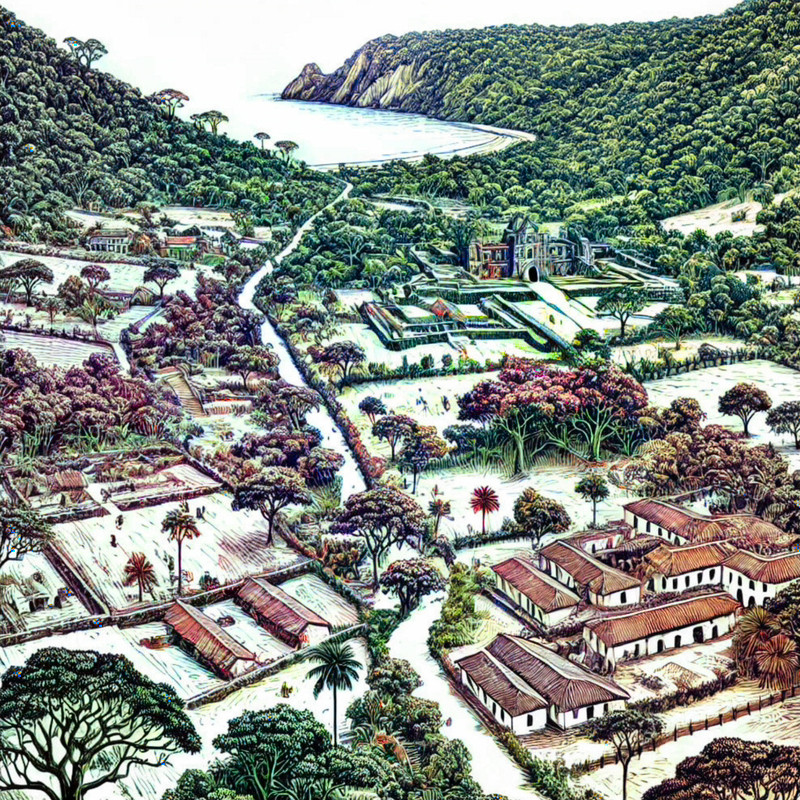
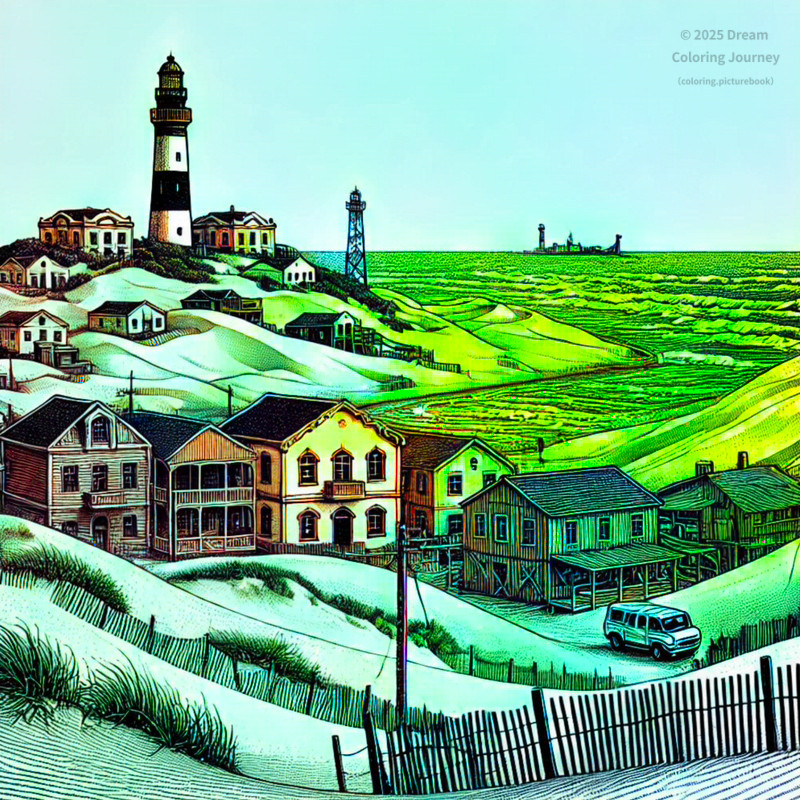
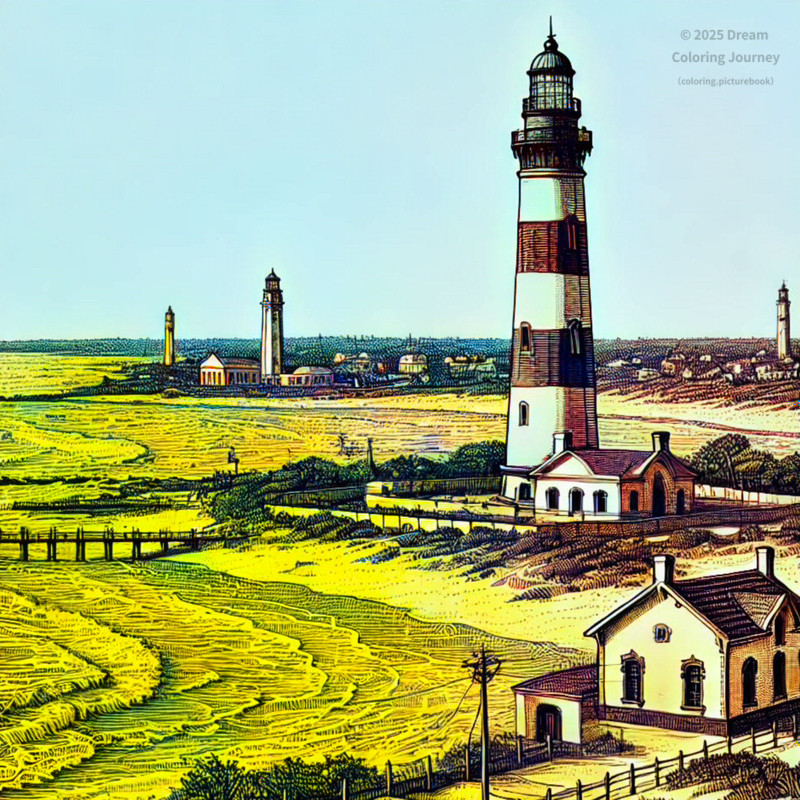
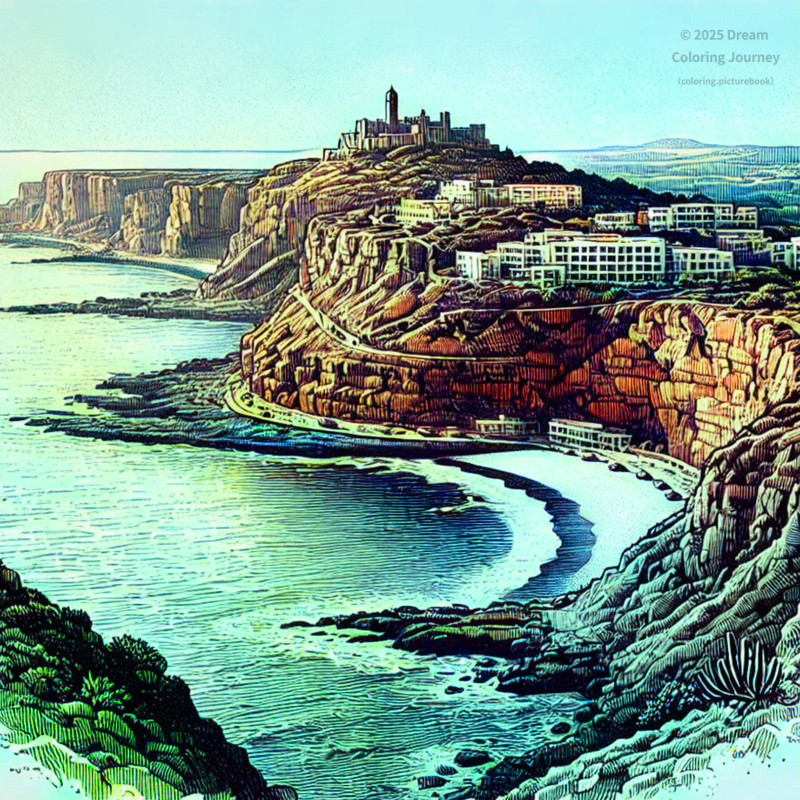
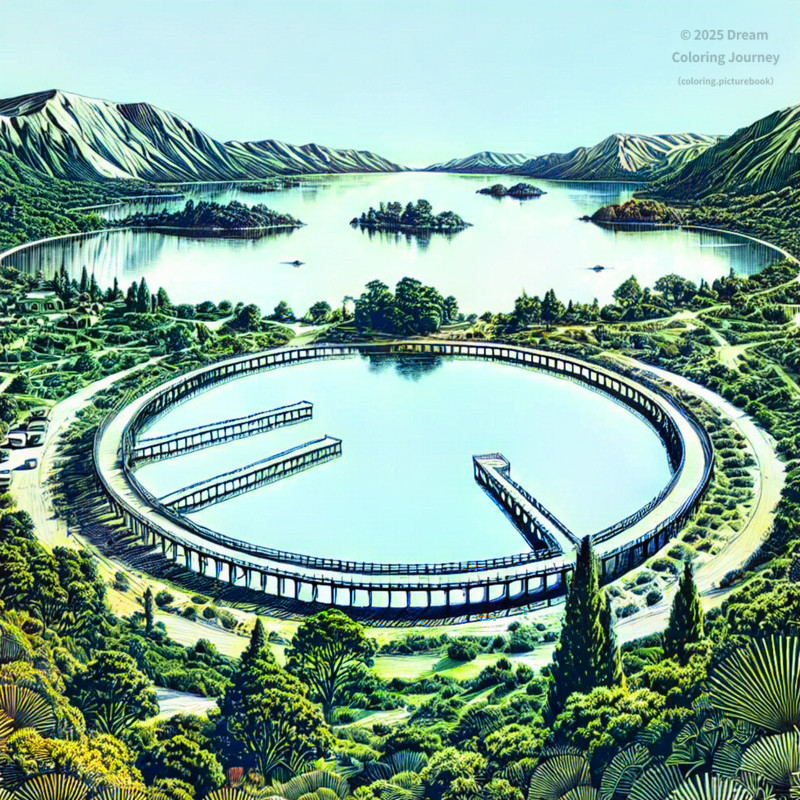
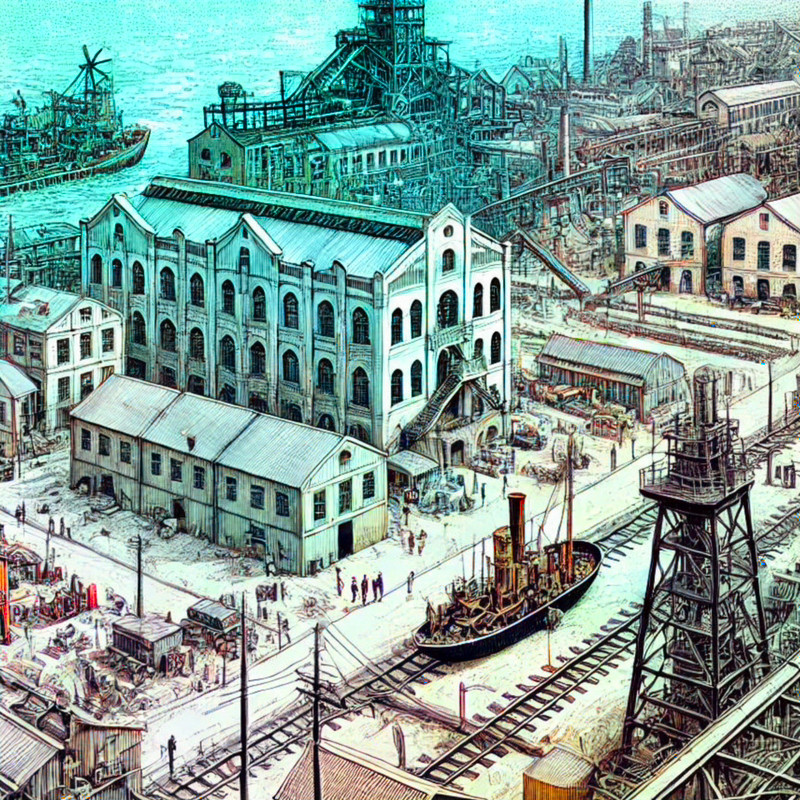
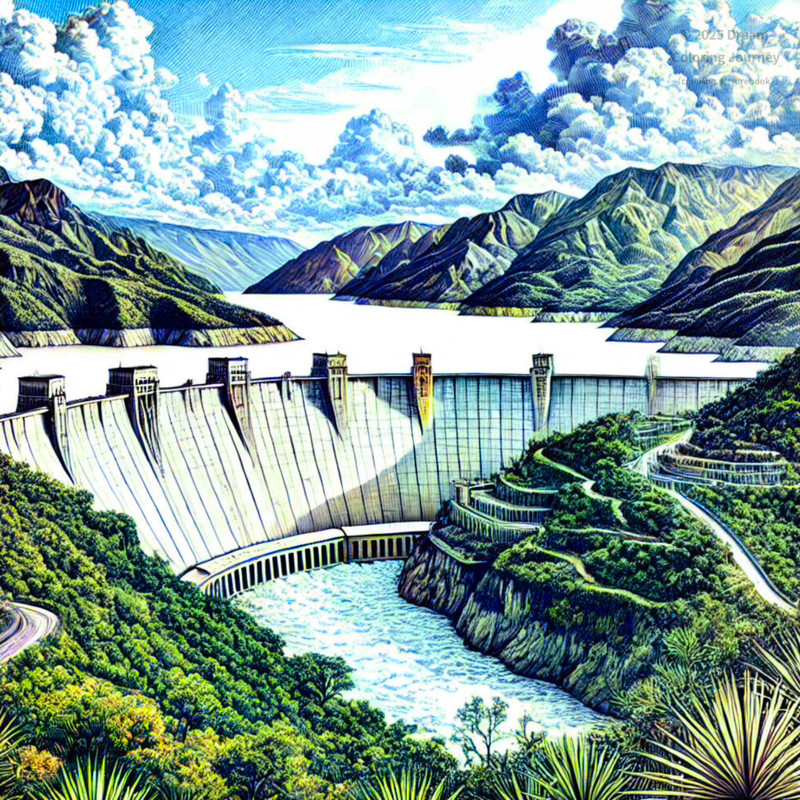
If you want to see other coloring themes, go to ⇒ Theme Search Map.
How to Purchase a Coloring Book
From the link below, you will be redirected to the Amazon Books site where you can purchase the corresponding paperback.
The book is printed in high-quality black-and-white for coloring and is available in English only.
Please refer to the "Coloring Page Sample" on this blog for inspiration, and enjoy coloring freely.

The coloring book is a 49-page, double-page spread book (each page measures 21cm x 21cm). It features 24 themes of tourist attractions depicted in the original coloring illustrations.
On the left pages, original black-and-white illustrations are depicted, while the right pages feature illustrations arranged for coloring.
View the Amazon Book Page Here
✈️ Uruguay Travel Guide【Perfect for Beginners】
🗺 Overview
Uruguay is a small but vibrant country located in southern South America, bordered by the Atlantic Ocean. It is well known for its peaceful atmosphere, high safety standards, and laid-back lifestyle. The capital, Montevideo, is a hub of culture and commerce, while colonial Colonia del Sacramento and beach resort Punta del Este offer unique travel experiences. Though compact, Uruguay offers beautiful beaches, charming towns, wine regions, and a warm welcome.
🌤 Climate & Best Time to Visit
Uruguay has a temperate climate, making it comfortable year-round. Since the country is relatively compact, regional differences are minor, though inland areas can feel slightly cooler than the coast.
- Summer (Dec–Feb): Best for beaches and seaside resorts
- Spring & Autumn (Sep–Nov, Mar–May): Ideal for sightseeing with mild temperatures
- Winter (Jun–Aug): Cooler, but still suitable for city exploration
🟢 Recommended Season: November to March is the high season for beach lovers.
🚍 Access & Transportation
- International Airport: Carrasco International Airport (MVD – Montevideo)
- From Japan: No direct flights. Travelers usually connect via Europe, the U.S., or Argentina
- From Argentina: Easy ferry access from Buenos Aires to Colonia or Montevideo
- Within Uruguay: Long-distance buses are comfortable and reliable. In cities, taxis and ride-hailing apps like Uber are widely used.
💰 Currency & Travel Costs
- Currency: Uruguayan Peso (UYU; 1 UYU ≈ ¥3.4 as of Sept 2024, subject to change)
- Prices: Slightly higher than other South American countries, roughly comparable to European cities
- Meals at mid-range restaurants: \$15–30 USD
- Local tours: from ~\$30–50 USD
- Tipping: 10% is customary at restaurants
🔐 Safety & Travel Tips
- Safety: One of the safest countries in South America. Still, avoid empty streets at night and stay alert in crowded places
- Tips: Watch out for pickpocketing in touristy areas. Maintain basic travel precautions
- Emergency Numbers: Police 911 / Ambulance 105
🗣 Language & Communication
- Official Language: Spanish
- English Proficiency: Common in hotels and tourist venues in cities; less so in rural areas. Learning basic Spanish phrases can enhance your experience
📱 Connectivity & Wi-Fi
- SIM cards are available at the airport and city shops
- Most hotels, cafés, and tourist spots offer free Wi-Fi. Mobile network coverage is reliable in urban areas.
🌟Highlights of 24 Tourist Attractions
1. Montevideo Skyline
Skirting the Rio de la Plata, Montevideo’s skyline is best admired along the 18-kilometer Rambla, where glass towers and heritage façades glow at sunset. Spring to early summer (Oct–Dec) brings mild weather ideal for strolling. From Carrasco International Airport it’s about a 30-minute drive to downtown; allow 1–2 hours to linger, frame the dusky colors, and feel how a beach city and national capital coexist along one sweeping waterfront.
2. Pocitos Beach
Montevideo’s beloved urban strand pairs soft sand with placid Rio de la Plata waters. Locals jog the promenade, gather for beach volleyball, and pause for spectacular sunsets that wash the skyline in amber. Summer (Dec–Feb) is the busiest for swimming, yet shoulder seasons feel relaxed. Buses and taxis reach the neighborhood in minutes from downtown; plan 2–3 unrushed hours to stroll, nap, and shoot the changing light as day fades into evening.
3. Plaza Independencia
The nation’s ceremonial heart centers on General José Artigas’ equestrian statue, with his mausoleum beneath. Historic palaces and cultural icons ring the square, bridging the old city and modern avenues. It’s walkable from downtown; most visitors spend 30–60 minutes circling the monuments and façades, especially at golden hour. The plaza’s vistas—framing Palacio Salvo’s spire—make classic photos and a clear first orientation point for the city.
4. Teatro Solís
Construction began in 1842 and the theater opened in 1856, making this neoclassical landmark one of South America’s oldest. Guided visits reveal gilded salons, impeccable acoustics, and stagecraft behind the curtain; attending a performance elevates the experience. Steps from Plaza Independencia, the venue welcomes visitors year-round. Expect 1–2 hours for a tour and photos of its dignified façade and luminous interiors, named in honor of explorer Juan Díaz de Solís.
5. Ciudad Vieja
Montevideo’s oldest quarter preserves cobblestones, pastel façades, and street art in a compact, walkable grid. Cafés and galleries mingle with bustling Mercado del Puerto, making the area ideal for a slow cultural ramble. Visit in spring or fall for soft light and comfortable temperatures; plan 2–3 hours to wander courtyards and frame textured walls, iron balconies, and murals that narrate the city’s layered past.
6. Palacio Salvo
Completed in 1928 and rising roughly 105 m, Palacio Salvo crowned Montevideo’s skyline as South America’s tallest of its day. Today the observation deck is closed, so most visitors admire its eclectic Gothic-meets-Art-Deco silhouette from Plaza Independencia, especially after dark when lighting dramatizes the spire. Budget ~30 minutes for exterior views and photos that capture both its ornate detailing and its enduring role as the square’s landmark sentinel.
7. Mercado del Puerto
Housed in an 1870s iron structure, this atmospheric market channels Montevideo’s culinary soul. Massive parrillas sizzle with asado, while weekend musicians add rhythm between counters piled with local fare. It’s an easy walk from downtown; allow 2–3 hours to sample grilled beef and photograph riveted trusses, smoke curling into the iron canopy, and convivial lunch scenes that blur lines between history, architecture, and appetite.
8. Punta del Este
Nicknamed the “St-Tropez of South America,” this peninsula presents two moods: surfy Brava and tranquil Mansa. In summer (Dec–Feb), marinas brim with yachts, casinos buzz, and nightlife hums, yet quieter corners persist beyond the lighthouse and dunes. Base a half-day to full-day visit from Montevideo (about 2.5 hours by car) to mix beach time, seaside dining, and scenic viewpoints that showcase why the resort lures celebrities and sunseekers alike.
9. Casapueblo
Sculpted over decades by artist Carlos Páez Vilaró beginning in 1960, this whitewashed cliff-side complex merges architecture and sculpture. Once his home and atelier, it now hosts a museum, hotel, and café. Arrive before sunset to watch the building glow against the Atlantic as the sky turns apricot to violet. Expect 1–2 hours for exhibits, terraces, and the ritual “Ceremony of the Sun.”
10. Playa Brava
Punta del Este’s energetic oceanfront pairs surfable swells with the iconic hand sculpture “Los Dedos,” created in 1982 by Chilean artist Mario Irarrázabal. Summer crowds sprawl across wide sands, while photographers line up at dawn and dusk for dramatic shots of fingers rising from the beach toward the horizon. Plan 2–3 hours for sun, surf, and essential photos beside Uruguay’s most famous piece of public art.
11. Colonia del Sacramento
Founded by the Portuguese in 1680 and inscribed by UNESCO in 1995, Colonia’s historic core (Barrio Histórico) embodies a rare fusion of Iberian urban traditions. Amble car-free lanes of stone, whitewashed walls, and vine-draped plazas that once contested trade routes across the estuary. Ferries from Buenos Aires take about an hour, making Colonia a timeless, easy day trip where every corner invites the camera.
12. Colonia Lighthouse
Rising 34 m above the ruins of the San Francisco Monastery, the white tower began in 1845, paused for war, resumed in 1855, and was completed in 1857. Climb for sweeping views of the UNESCO-listed district and the wide Rio de la Plata; late-day light warms brick lanes below. A 30-minute stop suits most itineraries, with extra time for photos at the base and the ramparts nearby.
13. Barrio Histórico
Colonia’s UNESCO-listed historic quarter enchants with cobblestones, colonial façades, and leafy plazas. Museums and artisan shops nestle along quiet lanes. By day, explore Iberian-influenced architecture; by dusk, the river glows amber behind tiled rooftops. Entirely walkable, 2–3 unrushed hours suffice to capture the atmosphere and photograph its evocative blend of Portuguese and Spanish legacies.
14. Portón de Campo
The stone gateway built in 1745 marks the entrance to Colonia’s old town. Once part of Spanish defenses, today it frames visitors’ first steps into the Barrio Histórico. Informational plaques explain the fortifications, while the drawbridge evokes colonial times. A 30-minute visit suits most itineraries, especially in the late afternoon when soft light enhances its aged stone.
15. Carmelo Vineyards
Set in Uruguay’s northwest, Carmelo’s boutique wineries showcase the country’s signature Tannat grape. Family-run estates offer tastings among vine rows and barrel rooms, often paired with artisanal cheeses. The town lies about three hours’ drive from Montevideo. Devote at least half a day to explore, sip robust reds, and feel how rural tranquility pairs with world-class wine culture.
16. La Paloma Beach
This Rocha seaside town balances fishing heritage with beachside leisure. Broad sands and relaxed waves invite sunbathers, surfers, and long seaside walks. Summer brings lively crowds, while winter offers solitude and surf. Sunsets over the Atlantic are memorable. Buses from Montevideo take about four hours; stay half a day to a full day to savor its unhurried pace.
17. Santa Teresa National Park
Stretching along Uruguay’s Atlantic coast, Santa Teresa protects dunes, forests, and abundant birdlife. Visitors hike trails, picnic under pines, and explore an 18th-century fortress restored on a hilltop. Accessible by car, the park rewards at least a half-day visit. Spring through autumn offers mild weather for outdoor discovery and encounters with wildlife in pristine surroundings.
18. Cabo Polonio
Accessible only by official 4x4 trucks across rolling dunes, this remote village feels cut off from modernity. Wooden cabins cluster by a lighthouse, while sea lion colonies sprawl across the rocks. Nights bring astonishing stargazing under dark skies. Within a national park, the community lacks grid electricity and roads, making half-day to full-day stays feel like stepping outside time.
19. José Ignacio Lighthouse
Built in 1877 and rising 32 m, this lighthouse overlooks a once-sleepy fishing village now known for refined dining and secluded villas. Climb for panoramic views of shoreline and dunes, then linger in stylish cafés. A 40-minute drive from Punta del Este, it suits a 1-hour stop combined with an unhurried lunch in Uruguay’s chic coastal enclave.
20. Punta Ballena
A dramatic headland near Casapueblo, Punta Ballena thrusts into the Atlantic with rugged cliffs and far horizons. It is celebrated for sunsets, when light gilds waves and cliffs alike. The site is about 2.5 hours from Montevideo by car. Visitors often spend 30–60 minutes for photos, sea breezes, and reflective moments along its rocky, unforgettable ridge.
21. Laguna Garzón
This tranquil lagoon in Rocha Province invites kite surfers, anglers, and campers. A circular bridge designed by Rafael Viñoly links its shores, blending infrastructure with landscape. Increasingly fashionable yet retaining rustic charm, the lagoon lies about three hours from Montevideo. Allow at least half a day to explore water sports, birdlife, and the region’s evolving coastal identity.
22. Fray Bentos Industrial Landscape
Once a global meat-processing hub, Fray Bentos preserves factory complexes that fueled 19th–20th century trade. Today its UNESCO-listed landscape includes the Industrial Revolution Museum, interpreting cold-storage innovations and global food networks. Near the Argentine border, it’s about four hours by car from Montevideo. Plan ~2 hours to tour exhibits and walk factory yards steeped in history.
23. Salto Grande Dam
Straddling the Uruguay River, this vast hydroelectric complex symbolizes binational cooperation with Argentina. The dam supplies much of Uruguay’s electricity and impresses with its scale. Guided tours explain engineering and sustainability efforts. Reaching it takes about six hours by car from Montevideo. A 1–2 hour visit offers commanding views from the crest and insight into regional energy.
24. Salto Thermal Springs
Northwestern Uruguay boasts mineral-rich hot springs near Salto, where resorts and public pools provide relaxation year-round. The waters are prized for therapeutic benefits, and modern complexes welcome families with spas and lodging. Argentines and Uruguayans flock here for weekend retreats. Half a day to overnight stays allow full enjoyment of pools, wellness treatments, and serene countryside.